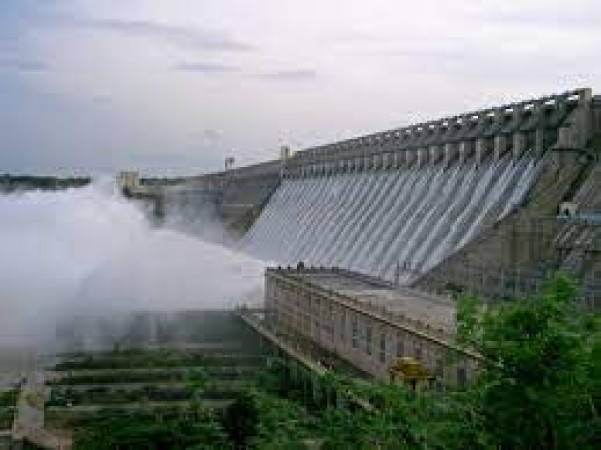Nagarjuna Sagar Dam Travel Guide
Nagarjuna Sagar Dam, located in India, is a significant historical and geographical landmark. The dam, built on the Krishna River, holds immense cultural importance and is famous for being one of the largest masonry dams in the world. It not only serves as a vital source of irrigation and hydroelectric power but also attracts tourists with its breathtaking views and serene surroundings.Top Attractions in Nagarjuna Sagar Dam
1. Nagarjuna Konda Island 2. Ethipothala Waterfall 3. Nagarjunasagar Wildlife Sanctuary 4. Anupu - Ancient Buddhist Site 5. Nagarjuna Sagar Dam viewpointNagarjuna Sagar Dam is Famous for
Its impressive masonry construction and the picturesque setting make Nagarjuna Sagar Dam a popular tourist destination.Top Attractions in Nagarjuna Sagar Dam
- Nagarjuna Konda Island - Ethipothala Waterfall - Nagarjunasagar Wildlife Sanctuary - Anupu - Ancient Buddhist Site - Nagarjuna Sagar Dam viewpointWhat's Great about Travelling to Nagarjuna Sagar Dam?
- History buffs will enjoy exploring ancient sites. - Nature lovers can witness stunning waterfalls and wildlife. - Photography enthusiasts will find endless picturesque views.What's Not So Great about Travelling to Nagarjuna Sagar Dam?
- Not ideal for those seeking a bustling city experience. - Limited nightlife and entertainment options. - Accessibility to some attractions may require transportation arrangements.Travel Tips for Nagarjuna Sagar Dam
- Check visa requirements for international travelers. - Book accommodations in advance, especially during peak tourist seasons. - Follow safety guidelines when visiting wildlife areas or trekking spots.Important Nagarjuna Sagar Dam trip information
- Ideal Duration: A weekend trip is sufficient to explore the main attractions.
- Best Time to Visit: November to February for pleasant weather.
- Nearby Airports and Railway Stations: The nearest airport is in Hyderabad, around 150 km away, and the closest railway station is in Nalgonda, approximately 70 km away.
FAQ's on Nagarjuna Sagar Dam
Q1: What is the best time to visit Nagarjuna Sagar Dam?
The best time to visit Nagarjuna Sagar Dam is during the winter months from November to February when the weather is pleasant and ideal for exploring the area. Avoid the summer months as it can get extremely hot. Additionally, visiting during monsoon season from July to September offers lush greenery and a beautiful view of the dam in full capacity.
Q2: Do I need a visa to travel to Nagarjuna Sagar Dam?
As Nagarjuna Sagar Dam is located in India, tourists from most countries will need a valid visa to enter the country. Check with the Indian embassy or consulate in your country for specific visa requirements and any exceptions for tourists visiting the dam for a short duration.
Q3: What are the must-visit attractions in Nagarjuna Sagar Dam?
The top attractions in Nagarjuna Sagar Dam include the dam itself, the Ethipothala Waterfall, Nagarjuna Konda Island, and the Nagarjuna Sagar Wildlife Sanctuary. Visitors can also explore the nearby Nagarjunakonda Museum to learn about the history of the region.
Q4: Is Nagarjuna Sagar Dam a safe place to travel?
Nagarjuna Sagar Dam is generally a safe place to travel, but like any destination, it's important to take normal precautions. Avoid isolated areas at night and be cautious of pickpockets in crowded places. It is advisable to follow local laws and respect the customs of the region.
Q5: What is the local currency in Nagarjuna Sagar Dam and can I use credit cards?
The local currency in India is the Indian Rupee (INR). While credit cards are accepted at hotels, restaurants, and larger stores in urban areas, it's recommended to carry cash when visiting Nagarjuna Sagar Dam, as smaller shops and vendors may not accept cards. ATMs are also available in nearby towns for currency exchange.
Q6: What is the local cuisine like in Nagarjuna Sagar Dam?
Nagarjuna Sagar Dam offers a mix of traditional South Indian cuisine with influences from the Telugu region. Must-try dishes include Biryani, Dosa, Idli, and local seafood delicacies. Vegetarian options are widely available, and food stalls along the dam serve fresh and flavorful snacks.
Q7: What transportation options are available in Nagarjuna Sagar Dam?
Transportation options in Nagarjuna Sagar Dam include buses, taxis, and auto-rickshaws for local travel. Visitors can also rent cars or hire private drivers for more flexibility in exploring the region. Boat rides are available for tours around the dam and nearby attractions.
Q8: Are there any cultural norms or etiquette I should be aware of when visiting Nagarjuna Sagar Dam?
When visiting Nagarjuna Sagar Dam, it's important to dress modestly and respect local customs. Remove your shoes before entering religious sites, temples, or homes. It is customary to greet people with a 'Namaste' and avoid public displays of affection. Be mindful of taking photos, especially of locals, and always ask for permission.
Q9: I am a travel agent. How can I buy travel leads of Nagarjuna Sagar Dam?
Register yourself as a travel agent at agents.tripclap.com and then you can buy travel leads to Nagarjuna Sagar Dam once your account is approved. For more details contact our support team at +91-8069186564 or support@tripclap.com

